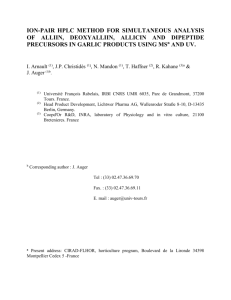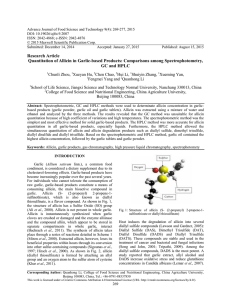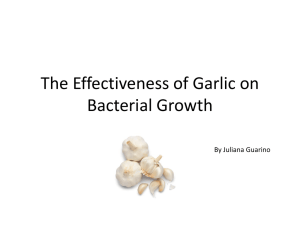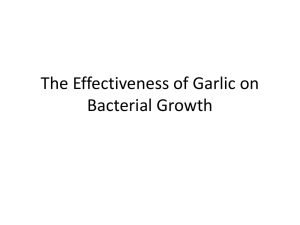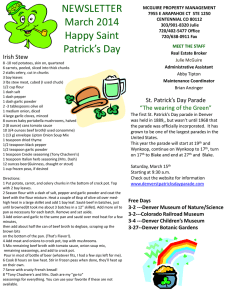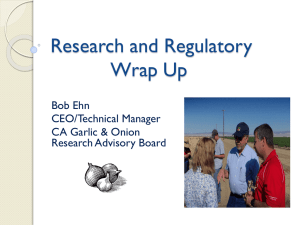ENG - Allimax
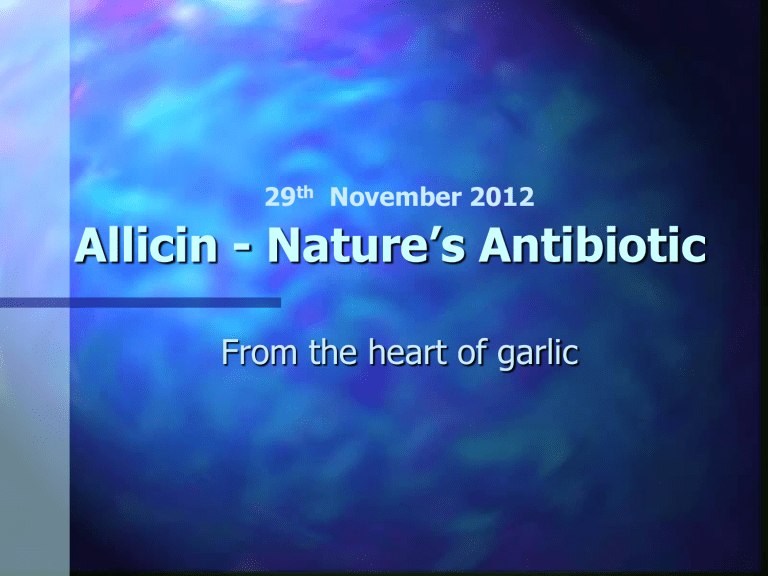
29 th November 2012
Allicin - Nature’s Antibiotic
From the heart of garlic
What’s in garlic that makes it so powerful?
Garlic contains a wide range of vitamins and minerals a sulphur compound called “alliin” and an enzyme called “alliinase”
When harvested garlic has no smell but it contains a very potent defence mechanism that starts when garlic is cut, cooked, boiled, chopped, fried or mechanically processed in any way
Now for the smelly bit!
Let’s make some Allicin
Crush some fresh garlic
Allicin produced from fresh garlic
ALLIIN
ALLINASE ALLICIN
Allicin the “Mother” substance
ALLICIN
AJOENE
DATS DADS
THIOSULPHINATE COMPOUNDS
FORMED WHEN ALLICIN BREAKS
DOWN ARE ALSO BODY ACTIVE
Historical properties of garlic that can be attributed to allicin
Anti-bacterial - wide spectrum of sensitive bacteria both gram positive and negative
Anti-viral (including common cold virus)
Anti-fungal (more effective than many drugs)
Anti-cancer (IOWA women’s study)
Anti-cholesterol (substantial data)
Anti-blood pressure (substantial data)
May reduce blood sugar levels
May help to reduce fat build up and lead to loss of weight
Types of Garlic supplement
Garlic oil capsules – no allicin potential
Aged garlic extract – no allicin potential
Garlic macerates – some allicin potential?
Garlic powder – potential depends on processing
Garlic powder easily inactivated by stomach acid
Allicin powder supplements like AllicinMax have now been available for 7 years
Active supplement manufactured by Allicin International Limited
Preventing the Common Cold
A double blind placebo controlled survey with 146 volunteers
Antiviral:
How “common” is a cold?
In the Western World we see 2-5 colds on average per person per year
Over 200 different cold virus types
Viral disease is an excellent traveller
The common cold costs National economies enormous sums of money in lost working days
Prevention is always better than cure
Results
Active supplement with the optimum dose of allicin is found
ONLY in AllicinMax
Results - Number of colds
Placebo
65
Active
0 20
24
40 60
P<0.05
80
Results - Average symptom duration (days)
Placebo
5.01
Active
0 1
1.52
2 3 4 p<0.001
5 6
Repeat infections
Placebo
16
Active
2
0 5 10 p<0.001
15 20
Conclusions
AllicinMax can prevent the Common Cold
Reduction of severity of symptoms
Re-infection less likely with AllicinMax
Could represent huge savings for the UK economy
Product is well tolerated and may offer other advantages according to volunteer reports
Manufacturer’s recommended dose was used
Addition of various vitamins or minerals or herbs is a logical combination
Allicin as a modern anti-bacterial
Known as “Nature’s antibiotic”
Broad spectrum of activity
No resistance has ever been recorded
Allicin prevents bacterial enzyme production
Problem infections can be resolved with allicin
Allicin is natural, safe and effective
MIC (ppm allicin) for some problem bacteria
Streptococcus pyogenes
Staphylococcus aureus
Listeria monocytogenes
Escherichia coli 0157
Salmonella typhimurium
Clostridium perfringens
Helicobacter pylori
16 ppm
16 ppm
16 ppm
32 ppm
32 ppm
64 ppm
16 ppm
Staphylococcus aureus
Involved in 95% of simple cases of eczema
Leads to worsening of clinical symptoms
Causes secondary infection
Prevents topical steroids from working
Present in most cases of acne
Prevalant bacterium in psoriasis
Staphylococcus aureus
-
The “Golden” Bacterium
Where it all began with real patients
Debra ’s wounds - open on the right but after treatment on the left both long standing wounds had closed and no further procedures were required
Human Volunteer Studies
Allicin kills Staph. aureus
Work completed at The University of
East London
30 bacterial strains were tested 12 were resistant to pharmaceutical antibiotics
ALL strains were sensitive to Allicin
Published in June 2004 in The Journal of Biomedical Science
AllicinMax vs MUPIROCIN
(a pharmaceutical antibiotic)
Case history – before treatment
Female, 14 yrs old 2 pins inserted wounds failed to heal for 18 months. Patient had several courses of antibiotics with no effect.
Surgeons were keen to readmit her and replace the pins and deal with the infection. We tested her as ++MRSA sensitive to allicin
Case history after treatment
Treatment was 10 AllicinMAX daily in divided doses (AllicinMAX only) for a period of 4 weeks. No creams or spray were needed in this case. Swabs post treatment showed no MRSA infection present in the healed area, groin or nasal cavity
What does this mean to patients?
You get your life back!
Is allicin really stable?
Purity of Allicin using HPLC
Relative
Intensity
75
(%)
50
Mass Spectrometric Analysis of Allicin
100
Allicin 1 mg/ml (Lawson)
163 (M+H + )
O
CH
2
CH S
CH
2
S
Allicin (162)
CH
2
CH
CH
2
Mass Intensity
73
121
163
40,128
54,038
162,051
121
25
73
180 (M+NH
4
+ )
0
100 150 200 250 m/z
300 350 400
Topical use of Alliderm Gel™
Headlice
Herpes cold sores
Warts (upstairs and downstairs)
Acne, eczema, psoriasis, rosacea
Toe nail and finger nail fungus
Mouth ulcers, tooth abcess, gingivitis
Molluscum contagiosum
Cuts, bruises, bites, wounds and stings
Hand washing experiments T 0hr
Both hands at the start of the test loaded with germs
Hand washing experiments
T+1hr untreated Alliderm™treated
Both hands were washed and one had Alliderm™ applied
Hand washing experiments T
+2hr untreated treated
No growth on the hand treated with Alliderm™ applied
Summary
Alliderm™ Gel can be used topically or internally for a very wide range of conditions
Alliderm™ Gel can be used to protect your hands (and other exposed skin surfaces) from infectious organisms
Alliderm™ Gel heals wounds very quickly and helps to prevent scarring
Alliderm™ Gel is safe and easy to use and does not contain alcohol so will not damage your skin
Allimax™ and Alliderm Gel™
Summary
A unique opportunity to capitalise on the long established properties of garlic’s active mother substance
ALLICIN. Only now is this 21 st century molecule available in a form that the human race can really feel the benefit.
Antiviral, Antibacterial, Antifungal, Antihistamine
Antiparasite, Anticholesterol, Antihypertensive
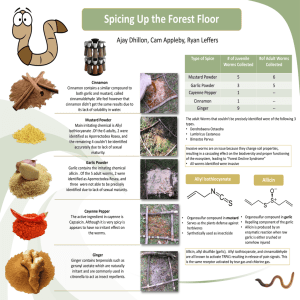
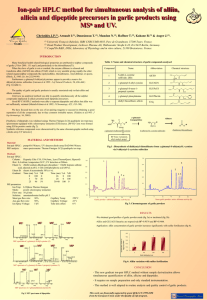
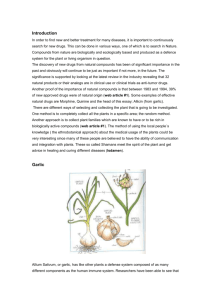
![[3H]-Allicin: Preparation & Applications](http://s3.studylib.net/store/data/025329278_1-700431f465ca7a1aeed9ea247c57ee9d-300x300.png)
